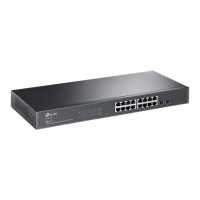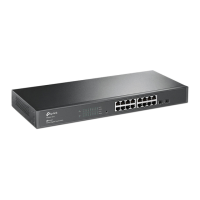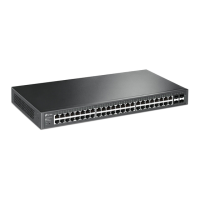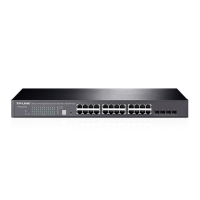Configuration Guide 730
Configuring SNMP & RMON Configuration Example
6
Configuration Example
6.1 Network Requirements
A company that deploys NMS to monitor the operation status of TP-Link switches has
requirements as follows:
1) Monitor traffic flow of specified ports, and send notifications to the NMS when the
actual rate of transmitting and receiving packets exceeds the preset threshold.
2) Monitor the sending status of specified ports, and regularly collect and save data for
follow-up checks. Specifically, during the sample interval, the switch should notify the
NMS when the number of packets transmitted and received on the port exceeds the
preset threshold; the switch should record but not notify the NMS when the number of
packets transmitted and received is below the threshold.
6.2 Configuration Scheme
1) Set a limit on the rate of the specified ports, and then enable SNMP on Switch A.
Configure SNMP and Notification, and enable Trap notifications on the ports. Switch
A can then send notifications to the NMS when the actual rate exceeds the preset
threshold.
2) After SNMP and Notification configurations, you need to create statistic entries on the
ports to monitor the real-time transmitting and receiving of packets and create history
entries to regularly collect and save related data. Create two event entries: one is the
notify type used to notify the NMS, the other is the log type used to record related
events. In addition, create an alarm entry to monitor BPackets (Broadcast Packets), set
the rising threshold and falling threshold, and bind the rising event to the notify event
entry, and the falling event to the log event entry.

